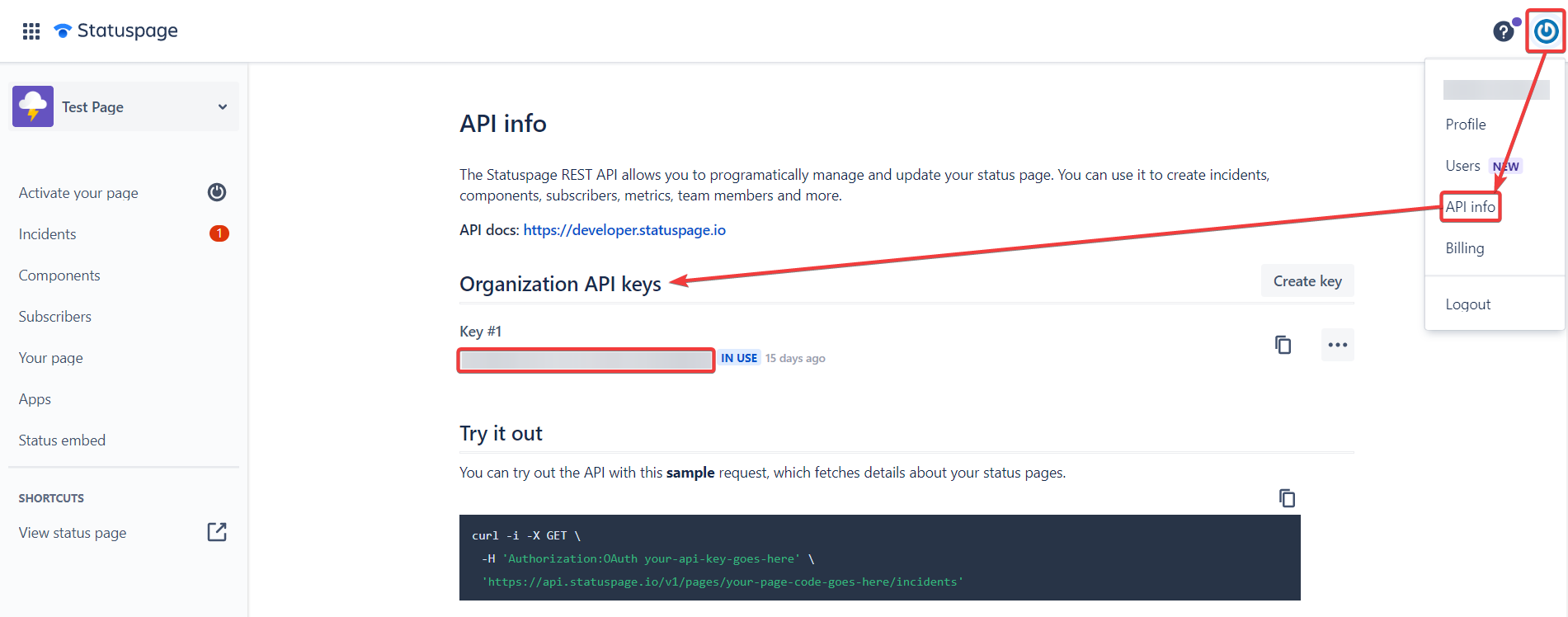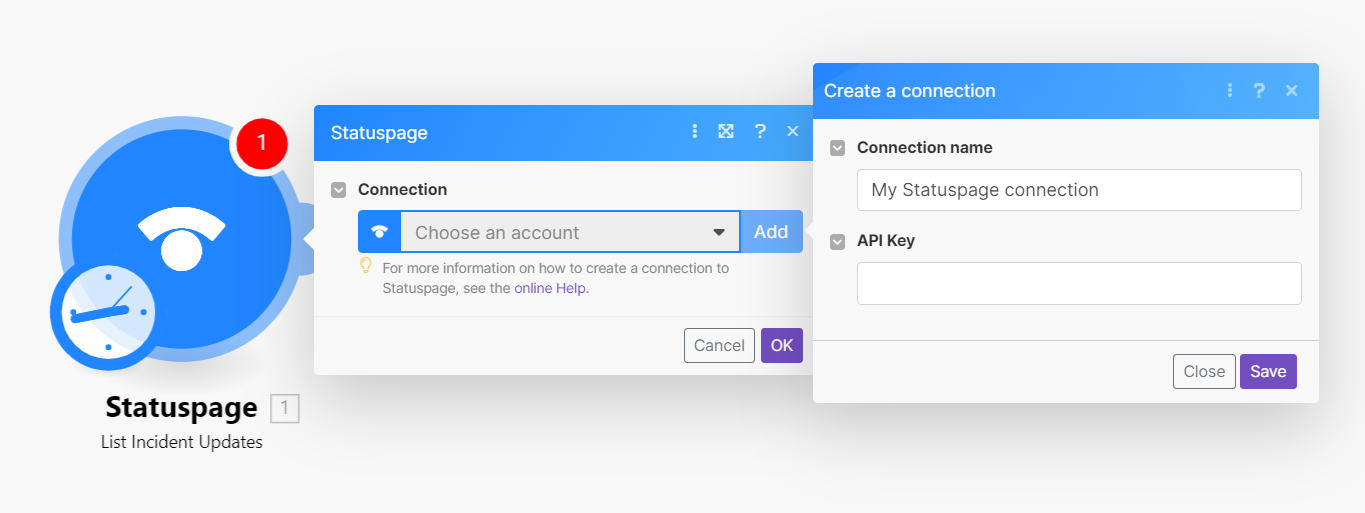With Statuspage modules in Make, you can:
watch and list incident updates
call APIs
To get started with Statuspage, create an account at statuspage.io
To connect Statuspage app, you need to obtain the API Key value from your Statuspage account and insert them in the Statuspage module scenario.
Log in to your Statuspage account.
Click Profile Icon > API Info and copy the API Key to a safe place.

Log in to your Make account, insert a Statuspage module scenario, and click the Add button next to the Connection field.
Optional: In the Connection name field, enter a name for the connection.
In the API Key field, enter the details copied in step 2 and click Save.

You have successfully established the connection. You can now edit your scenario and add more Statuspage modules. If your connection needs reauthorization at any point, follow the connection renewal steps here.
You can watch and list incident updates using the following modules.
Triggers when an incident is updated.
Connection | |
Page ID | Select or map the Page ID whose incidents you want to watch. |
Incident ID | Select or map the Incident ID whose details you want to watch. |
Limit | Set the maximum number of incidents Make will return during one execution cycle. The default value is 10. |
List all incident updates.
Connection | |
Page ID | Select or map the Page ID whose incidents you want to list. |
Incident ID | Select or map the Incident ID whose updates you want to list. |
Limit | Set the maximum number of incident updates Make will return during one execution cycle. The default value is 10. |
You can call APIs using the following module.
Performs an arbitrary authorized API call.
Note
For the list of available endpoints, refer to the Statuspage API Documentation.
Connection | |
URL | Enter a path relative to |
Method | GET to retrieve information for an entry. POST to create a new entry. PUT to update/replace an existing entry. PATCH to make a partial entry update. DELETE to delete an entry. |
Headers | Enter the desired request headers. You don't have to add authorization headers; we already did that for you. |
Query String | Enter the request query string. |
Body | Enter the body content for your API call. |
The following API call returns all incidents from a particular page of your account.
URL: /v1/pages/{page_id}/incidents
Method: GET

Matches of the search can be found in the module's Output under Bundle > Body.
In our example 2 incidents were returned:
